How Benchling is reimagining the ELN for connected, AI-native science

Science is moving faster than ever and the electronic lab notebook (ELN) must evolve to keep up. What was once a static record of experiments is now transforming into the backbone of modern R&D: a connected, AI-ready workspace that brings structured data, collaboration, and automation together in one place.
At Benchling, we’re reimagining the ELN for this new era of scientific work. Every new capability — from Custom Studies and Requests to the latest In Vivo releases — is built to help teams capture structured data from the start, collaborate seamlessly across disciplines, and automate the workflows that once slowed science down.
Whether you're scaling complex programs or aiming to future-proof your data, here’s how Benchling is reshaping the ELN for the era of connected, AI-powered science.
Structured and centralized data from the start and throughout
Balance flexibility and control with Template Publishing
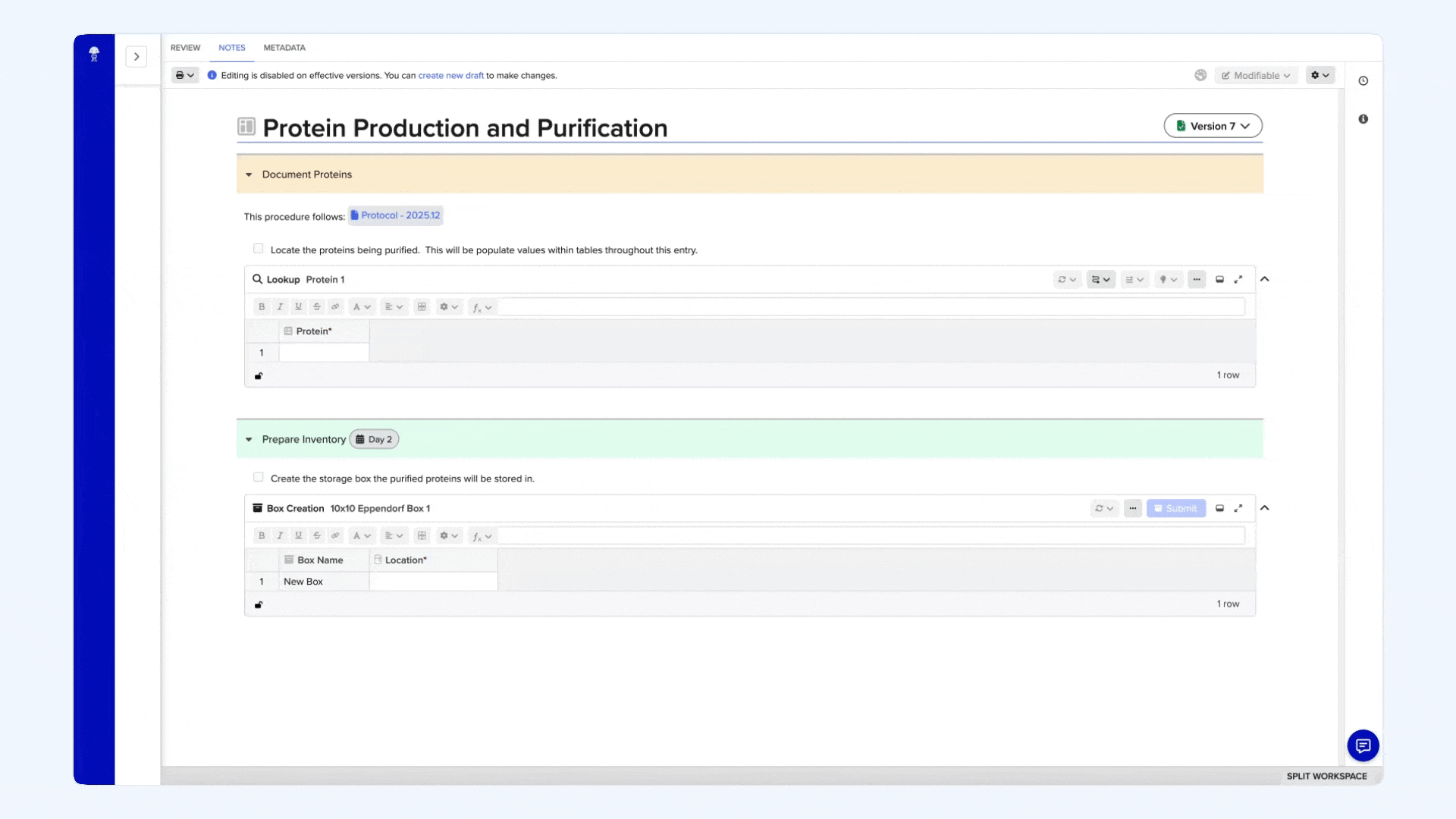
Ever wish you could refine your experiment templates without disrupting ongoing work? With Template Publishing, now you can. Scientists and admins can edit templates in private draft mode while the published version stays available to teams, ensuring experiments continue uninterrupted. Once updates are ready, they can be published and instantly made available to end users.
Templates in Benchling’s Notebook let you create pre-formatted ELN entries for repeated work, ensuring consistent, standardized data capture across your organization. This approach gives scientists confidence that they’re always working from the right version of an experiment template, while also providing the flexibility to refine and improve templates. By allowing admins to draft, review, and only publish chosen templates, teams reduce errors, maintain consistency, and ensure compliance across recurring workflows.The result is higher data quality, smoother collaboration, and faster onboarding for new team members who can immediately start with standardized, validated templates.
Now in limited availability. Contact support to turn on.
Your scientific homepage for managing studies
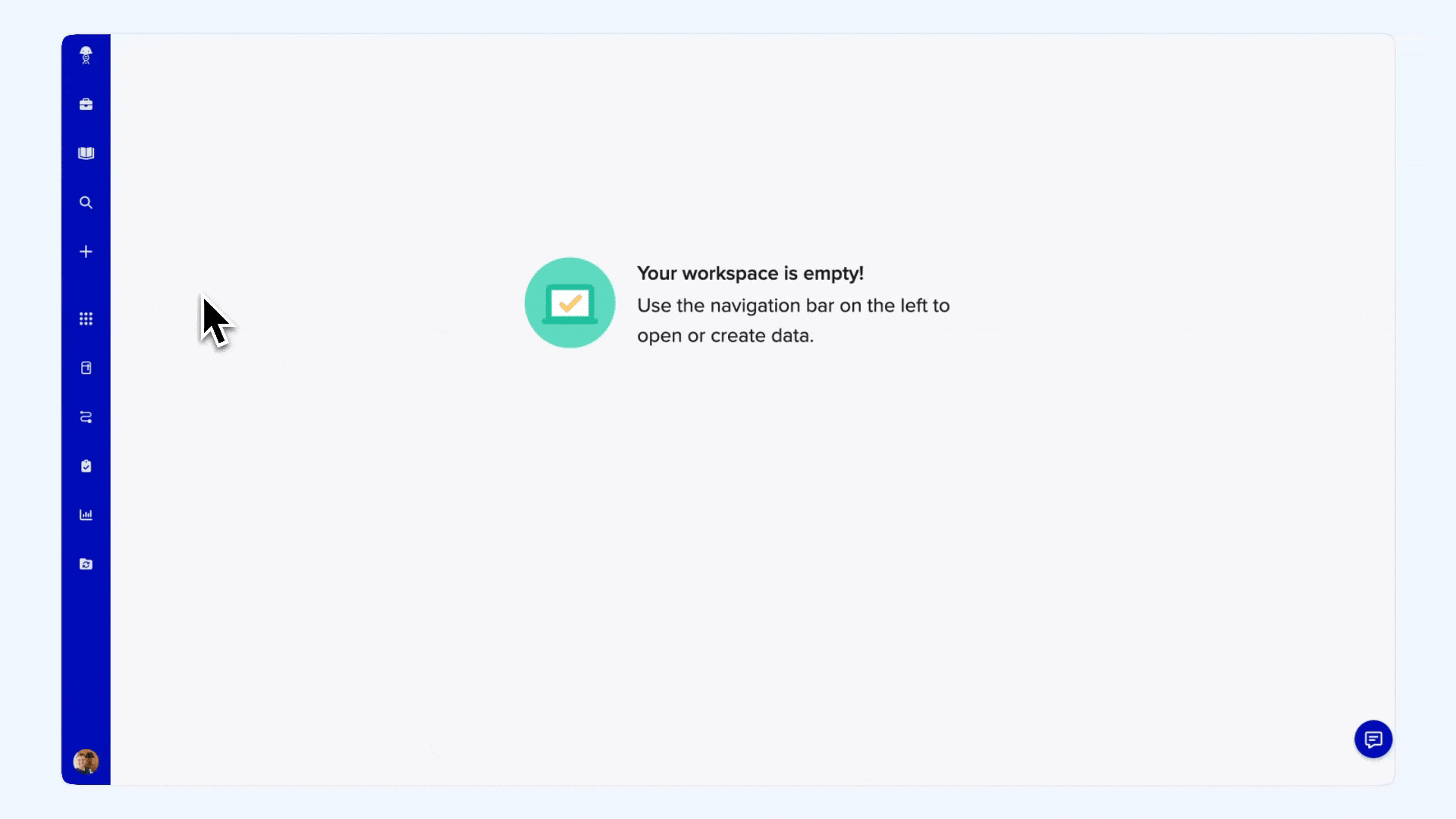
Scientific projects rarely move in a straight line. Experiments evolve, new data emerges, and what started as a single hypothesis often grows into a complex web of related work. Custom Studies brings order to that complexity by giving teams a central hub to organize, track, and analyze experimental data across its full lifecycle from design to execution to completion.
Previously, scientists relied on custom entities or projects to group experiments, often missing a unified view of data or status. With Custom Studies, you can now create a study, design it directly within a Notebook entry, update its phase as work progresses, and capture all associated data in one cohesive view so organization happens on autopilot. Think of it as your team’s scientific homepage — a single place to see every experiment, result, and resource connected to a study.
Now in limited availability. Contact support to turn on.
Capture in vivo intake data with built-in structure and scientific context
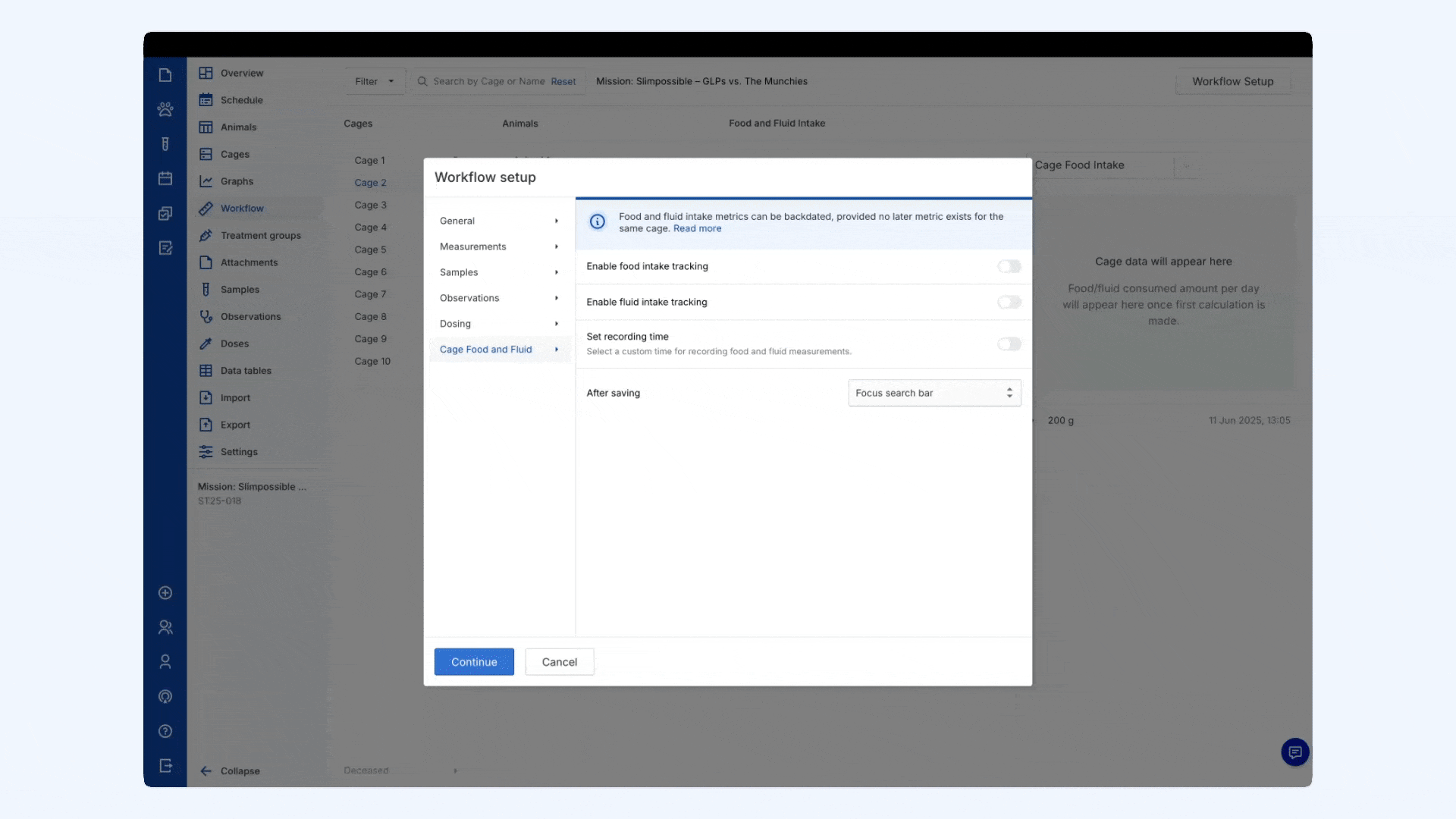
Once your study is designed and organized in Benchling, the next step is structured data capture. In addition to AI capabilities like the Data Entry Agent, which takes unstructured data in files and images and outputs structured data, we are also introducing Food and Fluid Intake Tracking — a long-requested capability that adds structured intake measurement directly into group-housed animal studies.
With this update, researchers and lab technicians can record intake data at the cage level as part of their standard workflows, while Benchling automatically calculates per-animal daily averages. These calculations factor in food in, food out, spillage, number of animals, and days elapsed which are all automatically linked back to the study for full context.
For teams running metabolic or preclinical research, such as studies on appetite suppression and GLP-1 agonists, this data becomes a powerful layer of insight. Intake information can be visualized over time, exported for further analysis, or used to balance study arms during randomization. Researchers can even exclude unreliable data points, like those affected by bottle leaks or animal deaths, while maintaining a complete intake history for traceability and compliance.
Now in limited availability. Contact support to turn on.
Bring clarity to study design with integrated animal and sample planning
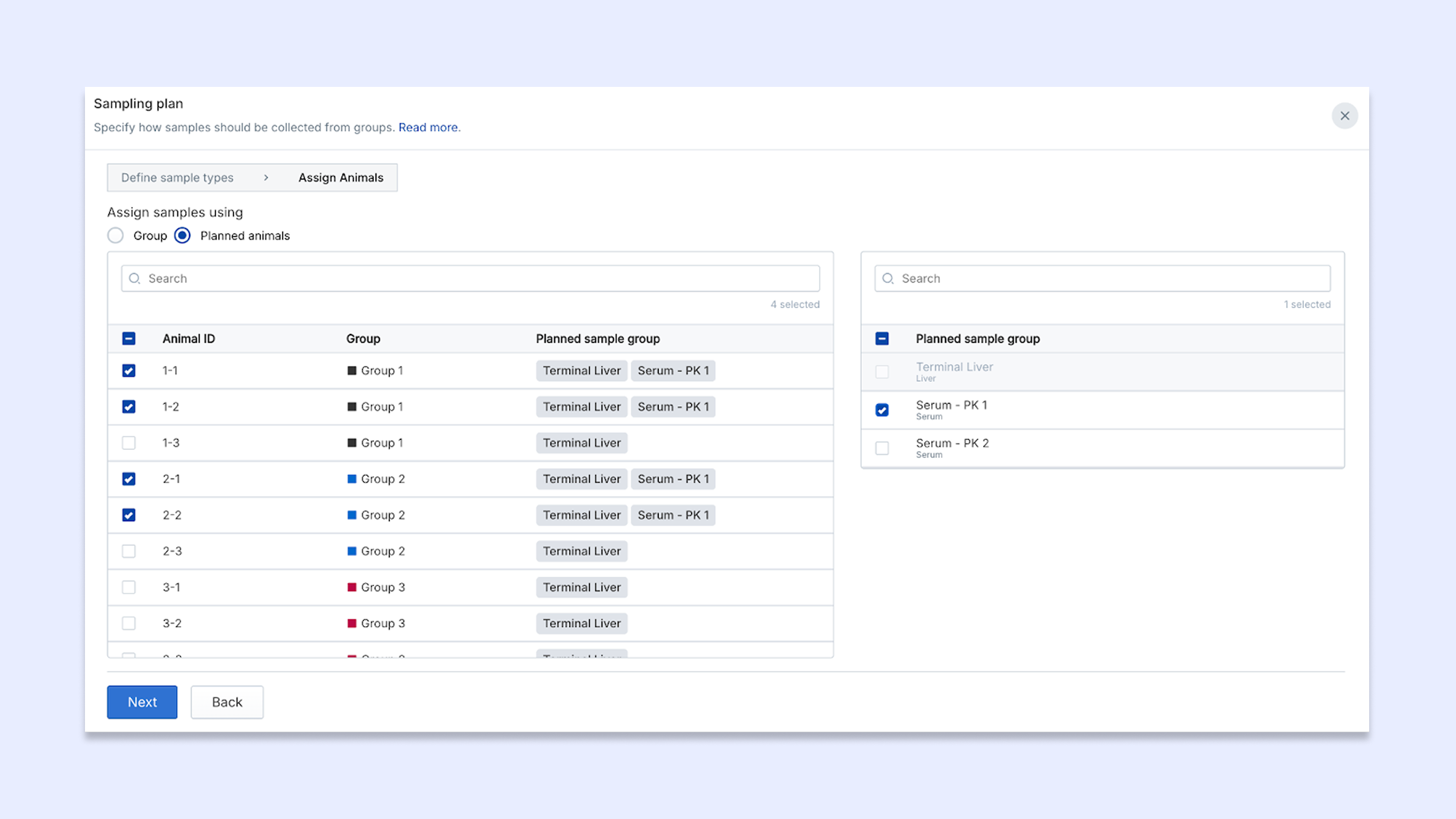
Alongside intake and fluid tracking, Benchling’s new animal and sample planning allows study designers to predefine animal IDs, metadata, and groups, then create animal data types directly from their plan or register them later as work progresses. Sample planning adds a structured way to define and assign collection details like timepoints, tissues, and volumes, keeping every sample connected to its study context.
By aligning setup and execution from the start, teams reduce redundancy and eliminate spreadsheet chaos. Study directors gain visibility into planned groups and collection workflows, while scientists and technicians can focus on execution with consistent, validated plans. This tool strengthens data integrity and makes study operations more efficient, predictable, and compliant — from first plan to final result.
Now in limited availability. Contact support to turn on.
Track disease induction with precision before treatment begins
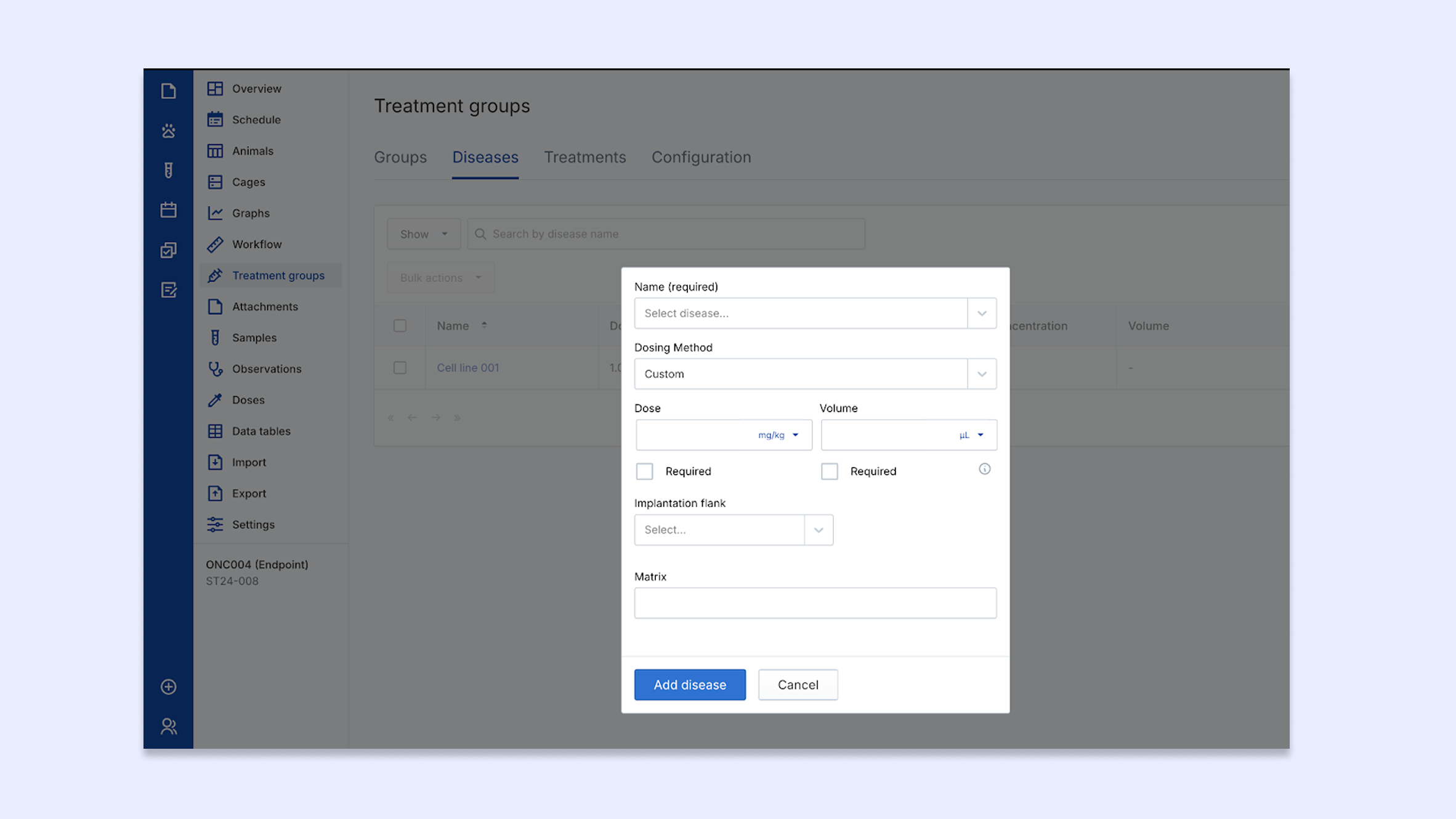
This update supports early-phase workflows by letting teams record disease induction methods, timing, and details of the induction agent all in a structured form.
With disease induction and pre-treatment tracking, users can:
Model disease induction agents directly, with structured metadata based on study protocols
Separate disease induction from experimental treatments, allowing for more accurate study registration and planning
Administer disease agents and pre-treatments before group assignment, supporting more flexible and realistic study designs
Bulk dose animals and automatically capture disease induction dates, streamlining workflows and reducing the risk of manual errors
This feature brings greater precision to in vivo study design, helping study directors and scientists plan, track, and execute experiments with confidence.
Now in limited availability. Contact support to turn on.
Collaboration and scheduling with ease
Streamline how your team makes and manages lab requests
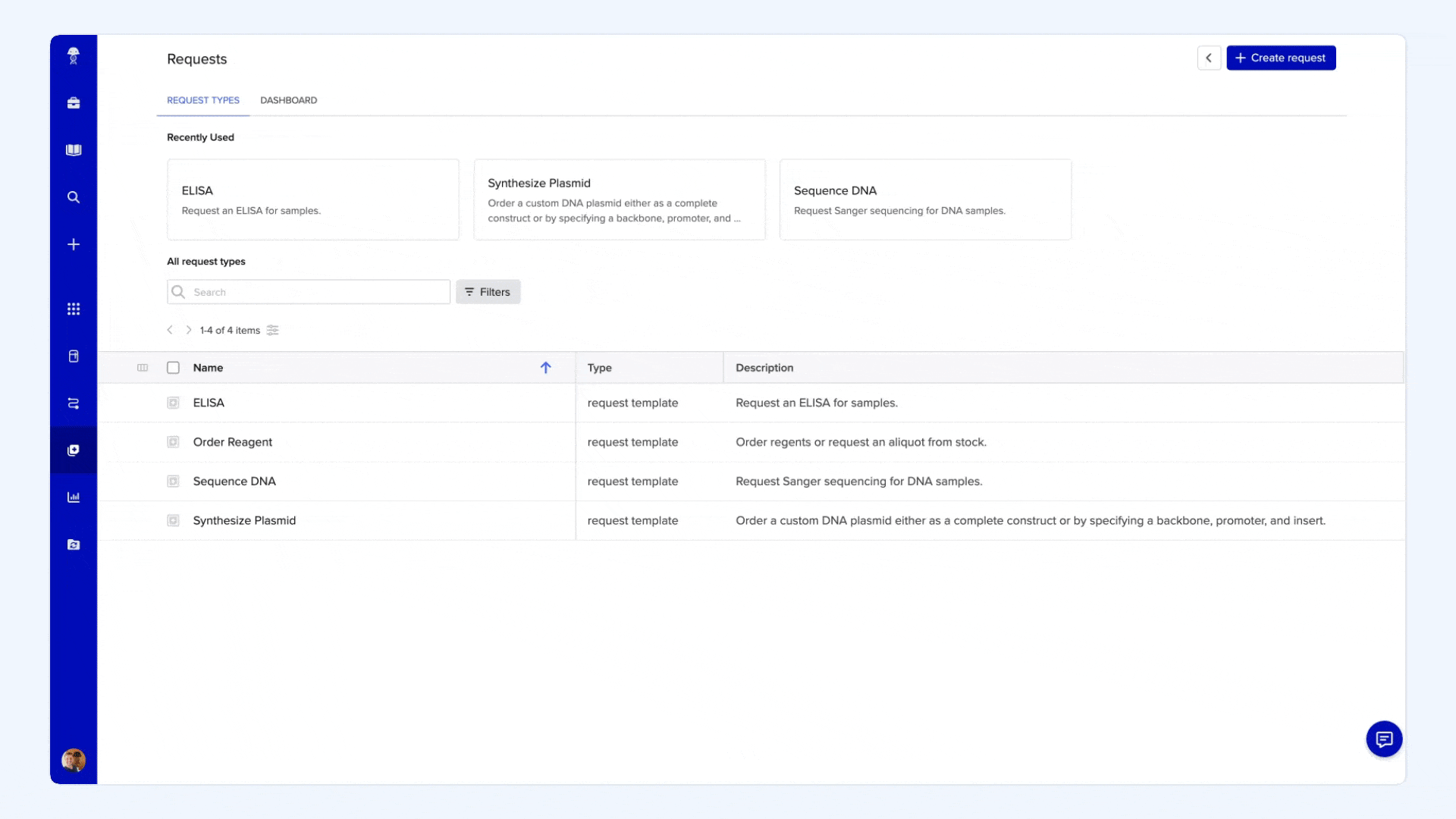
Every day, scientists make requests — for sample prep, sequencing, analysis, or any number of tasks that keep research moving. But keeping track of what’s been requested, who’s handling it, and where it stands can be messy. The new Requestor Portal makes that process simple. It gives scientists a clear place to create, submit, and track their requests, all in one view. No more guessing what form to fill out or where a request went.
Alongside it, Request Templates help admins set up ready-to-use request forms with built-in guidance, attachments, and prefilled tables, so requestors can get it right the first time. Each template can be customized and shared with the right teams, reducing errors and cutting down on back-and-forth.
Together, the Requestor Portal and Request Templates make lab operations more organized and transparent. Scientists can focus on the science, not the logistics — and everyone stays aligned from request to completion.
Now in limited availability (must have Workflows). Contact support to turn on
Schedule confidently with built-in scheduling tools
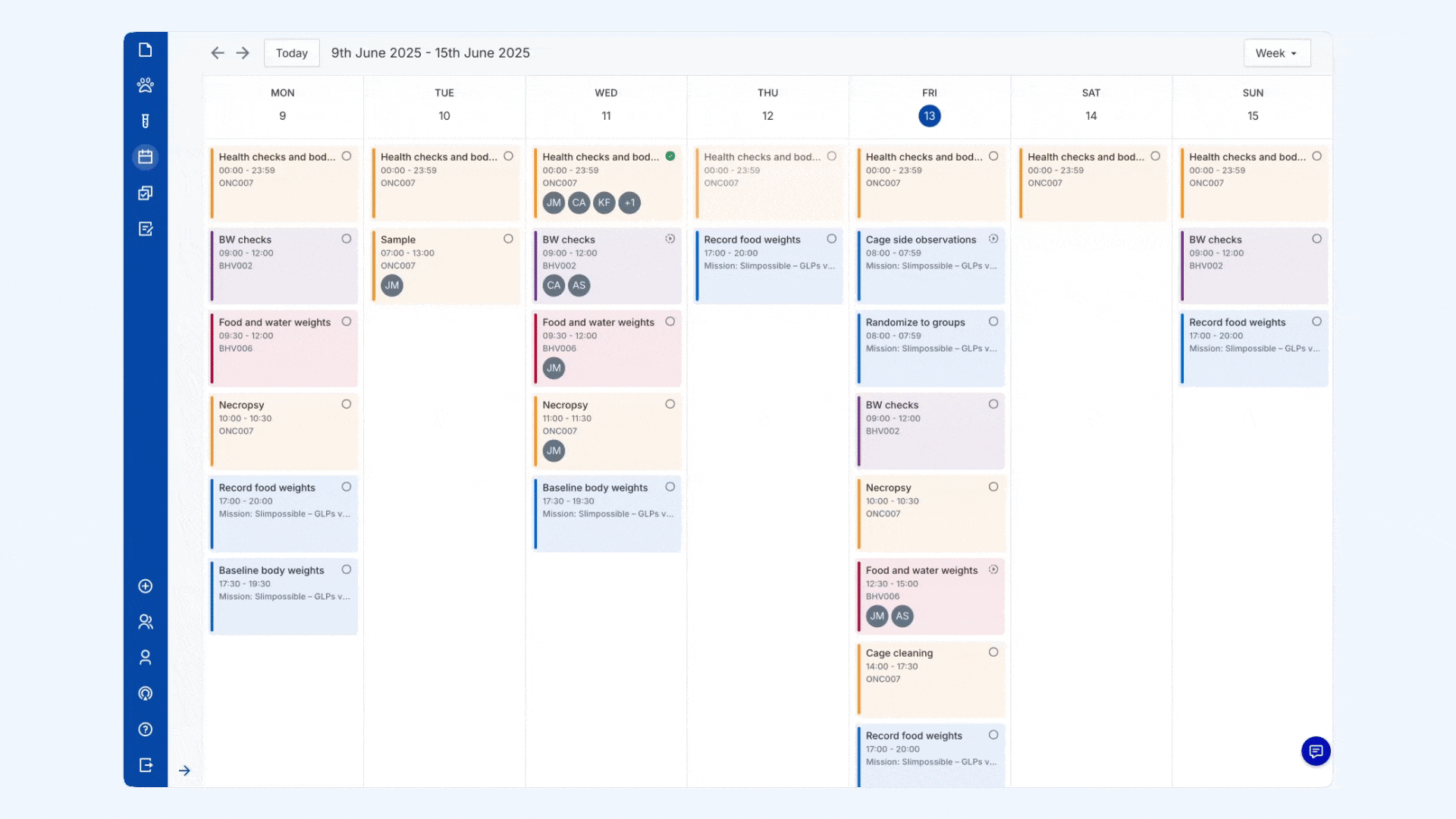
Coordinating complex in vivo studies often means juggling overlapping tasks, shared equipment, and tight timing. Timed Tasks allows scientists to define exact start times and durations for every activity, making it easier to plan accurately and avoid conflicts.
Study directors and lab managers can:
Set task durations in 30-minute increments
Reschedule tasks directly from the detailed view
View schedules in a new chronological calendar with daily, weekly and monthly views
Whether managing multiple teams or transitioning off custom scheduling tools, Timed Tasks give you a reliable calendar built directly into Benchling In Vivo.
Now in limited availability. Contact support to turn on.
Bring AI and automation into every step of your study
The ELN is no longer just for recording data. With Benchling AI and automation, it’s becoming an active partner in scientific discovery. These tools help scientists streamline repetitive tasks, reduce manual errors, and focus on discovery.
Once data is collected, the Data Entry Agent transforms unstructured files — PDFs, spreadsheets, and legacy reports — into clean, structured data ready for analysis. The Deep Research Agent goes further, enabling scientists to search across experimental results and documents, integrate relevant internal and external knowledge, and generate comprehensive, citation-backed insights to guide the next steps. Together, these AI-powered tools make it easier to plan, execute, and analyze studies.
The ELN that thinks, connects, and collaborates
The ELN is no longer just a place to record experiments, it’s becoming an active partner in your research. With Benchling’s connected, AI-powered platform, you can streamline workflows, capture structured data, and collaborate seamlessly across teams.
Ready to see how the ELN can transform your lab? Reach out to your Benchling account team or Customer Success Manager to explore how these advanced features can accelerate discovery, making your science smarter, faster, and more connected.



